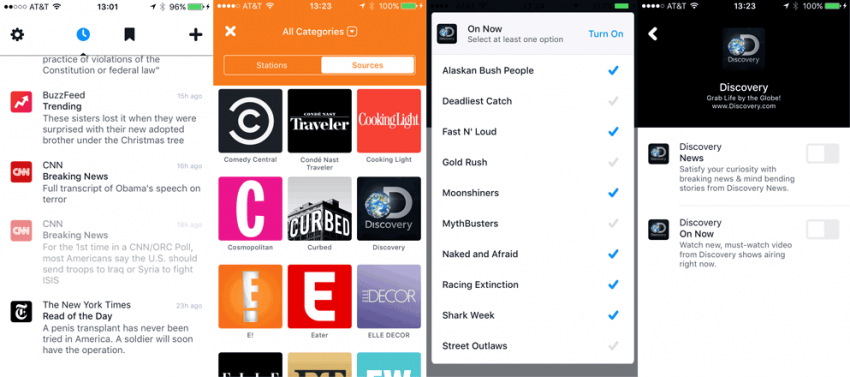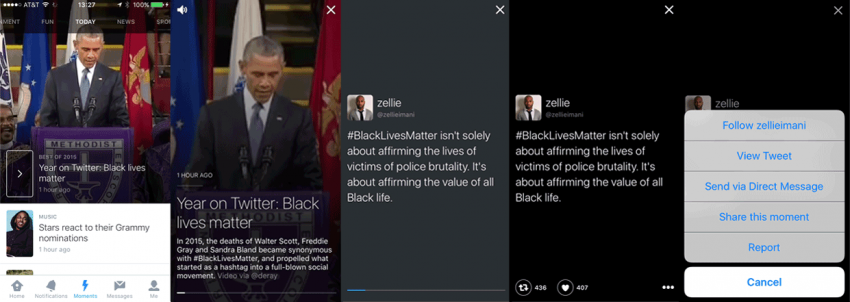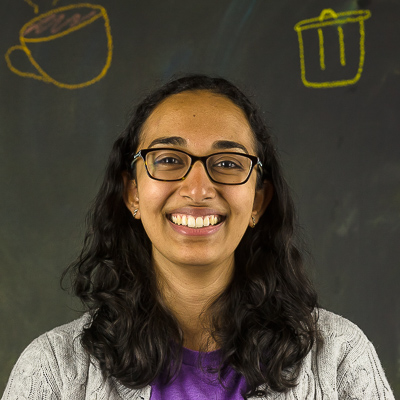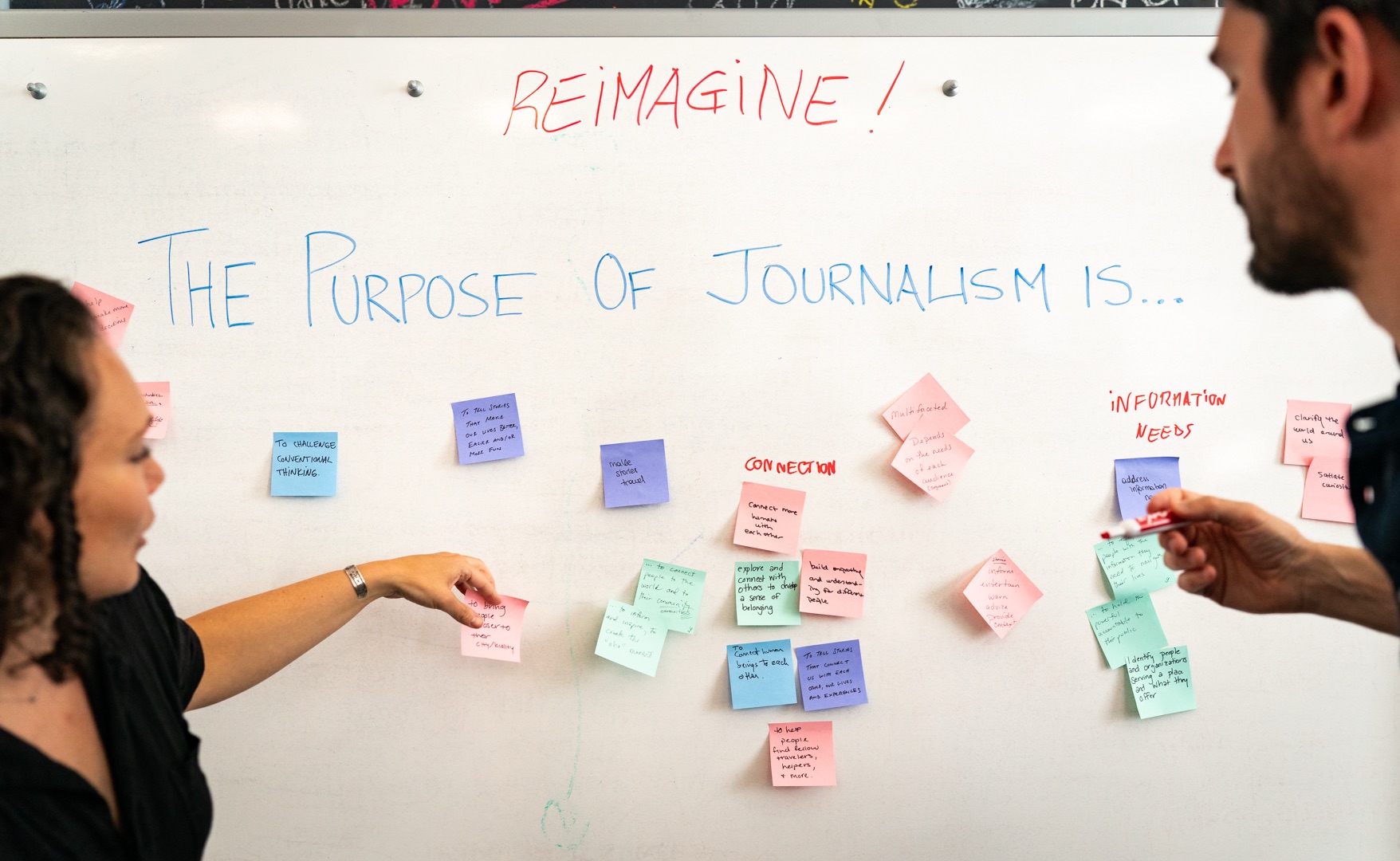As a typical #millennial I get most of my news from the organizations and friends I follow on Twitter and Facebook. I’ve also started regularly checking Snapchat Discover for curated entertainment content at my fingertips.
This year, Facebook, Twitter, Google, Snapchat and Apple all released new news aggregation and presentation features and apps for mobile. There are so many new ways to get your daily dose of news and information that it can be overwhelming to figure out what to use. To help, here’s a brief summary of each one along with a few thoughts about what they offer–or don’t–to consumers and publishers:
Snapchat

Snapchat unveiled their Discover feature at the beginning of the year with stories from media ranging from BuzzFeed to National Geographic to Fusion. The Discover feature allows users to swipe horizontally through images and video clips, and occasionally swipe up to watch or read more. Fields that benefit from brevity— comedy, recipes, and explainers –can find success with Snapchat Discover, especially since the content is updated on a daily basis.As an avid Snapchatter, I enjoy content tailored the platform, such as BuzzFeed’s single-panel illustrations that are built for sharing with friends, and Mashable’s illustration challenges. I also really like the Comedy Central and Tastemade channels as both content types lend themselves to brevity. The social media platform recently announced that it will allow publishers to deep link to non-Snapchat content, a feature that has been sorely missing.

Facebook first started testing Instant Articles on a small sample of iPhone users in May. The company has teamed up with publishers across the globe to create a way for them to share content on Facebook that loads quickly within the app and integrates certain social media features into the news reading experience (e.g. liking and commenting on an article without exiting the story, autoplay video, and more). Within the last few weeks, Facebook also announced Notify, a news aggregation app that seems to rival Apple News.I’ve been using Notify for a few weeks now as one of the sample of iPhone users in the U.S.. As someone who often finds aggregated content overwhelming, one of the standout features is that Notify lets me follow specific channels and series within the publications. Notify also sends me notifications on my lock screen when a publication I follow has shared a new article, and refreshes content every day.

Early October brought with it the advent of Twitter Moments, Twitter’s latest attempt at news/information aggregation. Similar to a Snapchat story, a “moment” is a group of tweets related to each other because of a common event, person or circumstance. The user can swipe sideways through a moment and once they’ve seen all there is to see in it, they can check back later for newer content. Though swiping up and down to go through my Twitter feed is an intuitive habit for me, swiping sideways to navigate content is new to me and doesn’t really fit in with my habits so far, so I have to make a conscious effort to check Moments. Some of them seem pretty cool, as they introduce portrait full-screen video and some of the most popular tweets with a hashtag or from a particular user, but this also raises questions about who is doing the curation of this content.
Apple

Apple News was made available to all iPhone users with the release of iOS 9 just a few months ago. As a news aggregation app, it has profiles of various publications that the reader/user can choose from. Though it’s supposed to look great on iPads and other tablets, as an iPhone user this mandatory app has been left pretty much untouched. I remember setting the app up according to my preferences when I first realized I had it, but I haven’t used it since. Similar to Facebook Notify, it changes the opacity of a headline once I’ve read it, and though its content feed shows articles that are several days old, it also shows me a history of the articles that I’ve read and saved.
Widely touted as Google and Twitter’s “answer” to Instant Articles on Facebook, the “Accelerated Mobile Pages” project is intended to decrease the time it takes for articles to load on mobile browsers. Though the project will not be released as a product in itself, it is supposed to be implemented starting early next year.
What does this mean for storytelling?
With some of the largest tech and social media companies jumping on the news media bandwagon, there’s bound to be some overlap of the positive and the negative results that their projects will have.
One of the main ideals behind most of these projects is decreasing the time it takes for an article to load. We all know that users tend to quit a webpage if it takes longer than a couple of seconds to load, so reducing the load time is one of the best results that these projects can have. With 63% of Twitter users and Facebook users getting their news from those social media sites, it comes as no surprise that publishers are now focusing on sharing their content on those platforms. Articles that are displayed quicker are shared more than those that aren’t, so publications paired with Instant Articles and Accelerated Mobile Pages could easily benefit from this. The downside of this is that publishers could lose traffic from their own websites, which could hit the smaller publications pretty hard on revenue. This also causes publications to lose valuable data on user demographics and habits; for example, Apple News currently provides analytics to publishers on a weekly basis instead of aggregating the data, which just isn’t as useful.
Another issue arises in the way these news articles are structured. They currently follow the format of headline dek, byline and paragraphs of text interspersed with multimedia and interactive content e. However, this is a very limited view of news production. With more and more publications creating visually rich and dynamic news apps that don’t adhere to the previous format, the question is how new media platforms will adapt to support newer forms of media. As the NYT Labs puts it, the future of news is not an article. Though the two platforms support custom typography, logos and other stylistic features that are part of each publication’s brand, they do not account for the more experimental storytelling formats (and advertisement types) that do not fit the aforementioned rigid mold that news media has fit into for so long.
About the author





